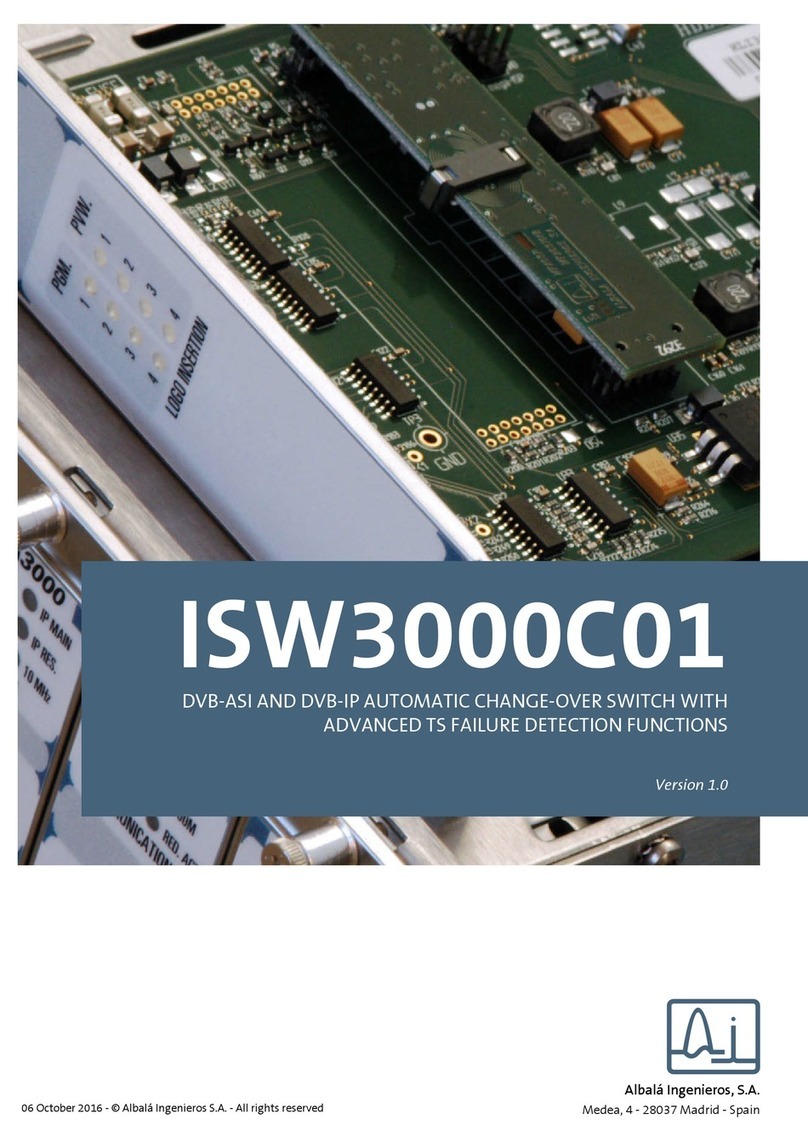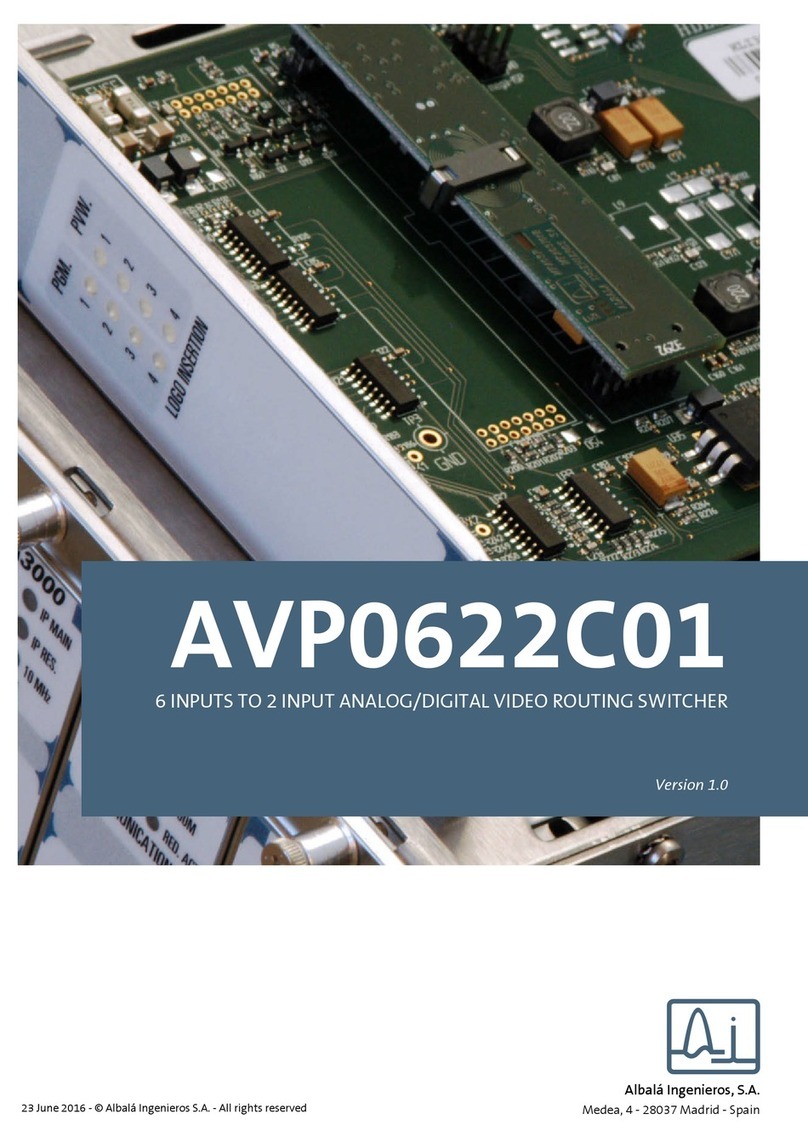
IPA2000C01
DVB-ASI AND DVB-IP AUTOMATIC CHANGE-OVER SWITCH WITH TS FAILURE
DETECTION FUNCTIONS AND SEAMLESS SWITCHING
Version 1.0
1. DESCRIPTION ...................................................................................................................... 5
1.1. The IPA2000C01 ............................................................................................................................. 5
1.2. Features ............................................................................................................................................. 7
1.3. Block diagram .................................................................................................................................. 8
2. SPECIFICATIONS ................................................................................................................. 9
3. INSTALLATION .................................................................................................................. 11
3.1. Initial inspection .......................................................................................................................... 11
3.2. Safety instructions ...................................................................................................................... 11
3.3. Environmental considerations ................................................................................................ 12
3.4. Installing the module in the mounting frame ................................................................... 12
3.5. Interconnection ............................................................................................................................ 13
3.5.1. Ethernet connections ........................................................................................................ 13
3.5.2. Electrical DVB-ASI video connections .......................................................................... 13
4. OPERATION ...................................................................................................................... 15
4.1. Front panel description .............................................................................................................. 15
4.2. Functional description ............................................................................................................... 15
4.2.1. Operation in automatic mode ........................................................................................ 16
4.2.2. Operation in semi-automatic mode ............................................................................. 16
4.2.3. Operation in manual mode ............................................................................................. 16
4.3. Description of the TS over IP encapsulators/de-encapsulators ................................... 16
4.4. System latencies .......................................................................................................................... 17
4.5. Module remote control and supervision ............................................................................. 20
4.5.1. Details of the IPA2000C01 registers ............................................................................. 21
5. GLOSSARY ........................................................................................................................ 31
6. REGULATIONS .................................................................................................................. 33
7. VERSIONS ......................................................................................................................... 35


































